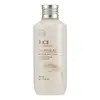What's inside
What's inside
 Key Ingredients
Key Ingredients

 Benefits
Benefits

 Concerns
Concerns

No concerns
 Ingredients Side-by-side
Ingredients Side-by-side

Water
Skin ConditioningGlycerin
HumectantAlcohol Denat.
AntimicrobialGlycereth-26
HumectantDipropylene Glycol
HumectantPEG-75
Humectant1,2-Hexanediol
Skin ConditioningOryza Sativa Extract
AbsorbentOryza Sativa Bran Oil
EmollientCeramide NP
Skin ConditioningDimethicone
EmollientPEG-60 Hydrogenated Castor Oil
EmulsifyingHydrogenated Lecithin
EmulsifyingAcrylates/C10-30 Alkyl Acrylate Crosspolymer
Emulsion StabilisingSodium Hyaluronate
HumectantCaprylic/Capric Triglyceride
MaskingPolyglyceryl-10 Oleate
Skin ConditioningLecithin
EmollientGlycosphingolipids
EmollientPotassium Hydroxide
BufferingTrisodium EDTA
Phenoxyethanol
PreservativeEthylhexylglycerin
Skin ConditioningParfum
MaskingHydroxycitronellal
PerfumingLinalool
PerfumingWater, Glycerin, Alcohol Denat., Glycereth-26, Dipropylene Glycol, PEG-75, 1,2-Hexanediol, Oryza Sativa Extract, Oryza Sativa Bran Oil, Ceramide NP, Dimethicone, PEG-60 Hydrogenated Castor Oil, Hydrogenated Lecithin, Acrylates/C10-30 Alkyl Acrylate Crosspolymer, Sodium Hyaluronate, Caprylic/Capric Triglyceride, Polyglyceryl-10 Oleate, Lecithin, Glycosphingolipids, Potassium Hydroxide, Trisodium EDTA, Phenoxyethanol, Ethylhexylglycerin, Parfum, Hydroxycitronellal, Linalool
 Reviews
Reviews

Ingredients Explained
These ingredients are found in both products.
Ingredients higher up in an ingredient list are typically present in a larger amount.
Ethylhexylglycerin (we can't pronounce this either) is commonly used as a preservative and skin softener. It is derived from glyceryl.
You might see Ethylhexylglycerin often paired with other preservatives such as phenoxyethanol. Ethylhexylglycerin has been found to increase the effectiveness of these other preservatives.
Lecithin is a term for a group of substances found in the cell membranes of plants, animals, and humans. They are made up of mixture of phospholipids.
This ingredient has emollient and emulsifying properties.
As an emollient, lecithen helps soften the skin and creates a barrier to keep moisture in.
As an emulsifier, it also helps prevent water and oil ingredients from separating. Lecithin can also help ingredients be better absorbed by the skin.
This is because the phospholipids in lecithin produce liposomes. Liposomes help other ingredients get through the skin barrier.
Depending on the source of this ingredient, lecithin may not be fungal acne safe. This is because some sources of lecithin come from soybean oil, which may feed the malassezia yeast that feeds fungal acne.
We recommend reaching out to the brand you are purchasing from to inquire about the source of their lecithin.
Some other names for this ingredient include soy lecithin and deoiled soy lecithin.
Learn more about LecithinPhenoxyethanol is a preservative that has germicide, antimicrobial, and aromatic properties. Studies show that phenoxyethanol can prevent microbial growth. By itself, it has a scent that is similar to that of a rose.
It's often used in formulations along with Caprylyl Glycol to preserve the shelf life of products.
Sodium Hyaluronate is hyaluronic acid's salt form. It is commonly derived from the sodium salt of hyaluronic acid.
Like hyaluronic acid, it is great at holding water and acts as a humectant. This makes it a great skin hydrating ingredient.
Sodium Hyaluronate is naturally occurring in our bodies and is mostly found in eye fluid and joints.
These are some other common types of Hyaluronic Acid:
Learn more about Sodium Hyaluronate